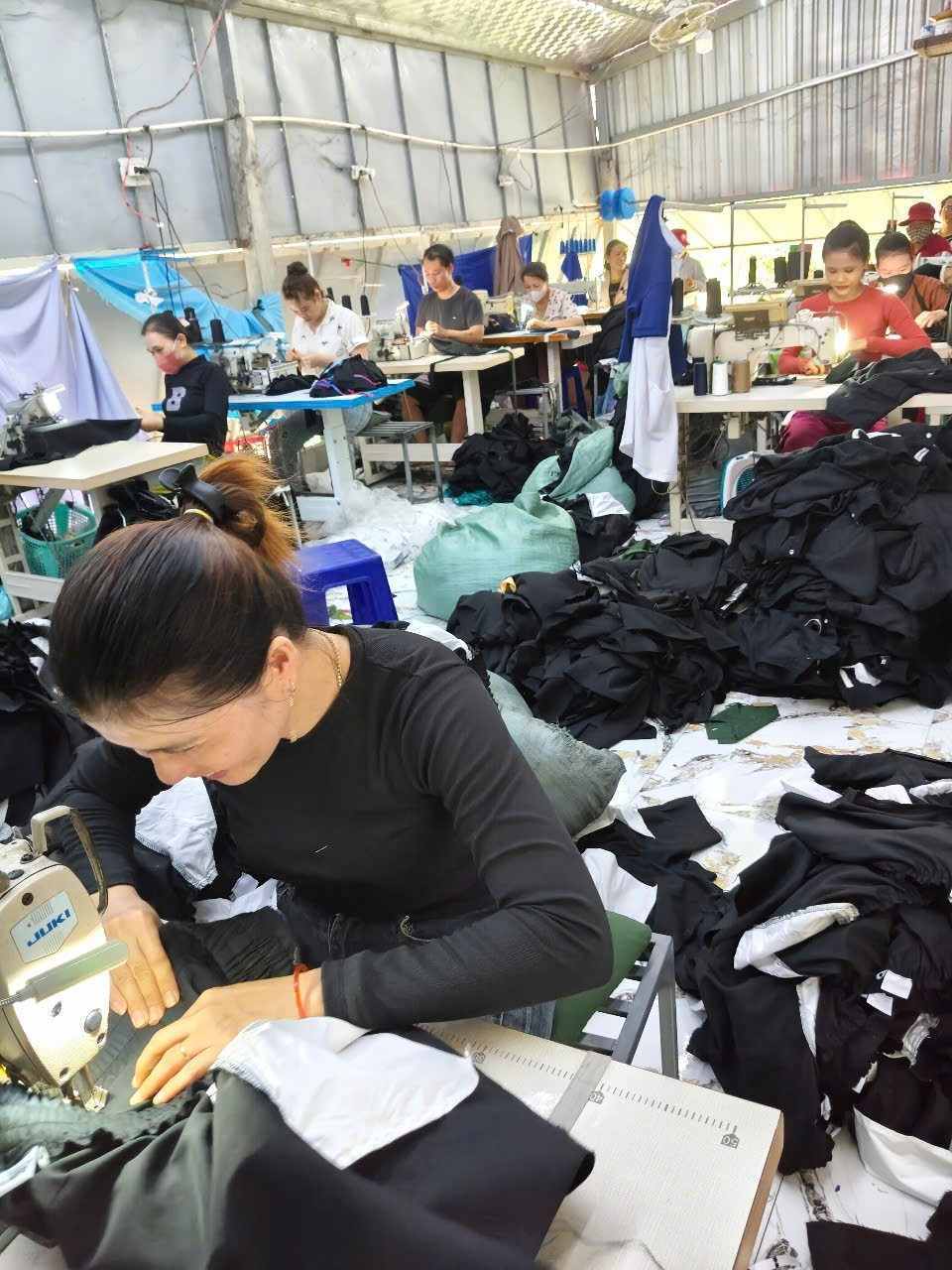Compliance in China vs. Vietnam: What Every Buyer Must Know in 2025
Manufacturing in Asia has entered a new era. Buyers are no longer judged only on cost and quality — compliance is now the gatekeeper. With U.S. Customs (CBP) cracking down on forced labor and transshipment, the choice between China vs. Vietnam is no longer just about price. It’s about whether your shipment clears customs or gets detained.
China: High-Risk, High-Scrutiny
China remains the world’s largest manufacturing hub, but it also sits under the Uyghur Forced Labor Prevention Act (UFLPA). CBP now presumes that any product linked to Xinjiang is made with forced labor unless the importer can prove otherwise.
- Forced Labor Risks: Xinjiang cotton, yarn, and inputs are red-flagged. Labor transfers extend the risk beyond Xinjiang itself.
- Transshipment Risks: Chinese factories routinely attempt to route goods through Vietnam, Cambodia, or Malaysia to hide true origin. CBP is trained to spot these moves.
- Compliance Burden: Buyers must provide clear and convincing evidence — factory audits, worker contracts, production records, and supply chain mapping. Without this, goods risk detention.
Vietnam: Opportunity with Watchpoints
Vietnam has become the “China alternative” for many brands. Labor costs are lower, and trade agreements with the U.S. and EU make it attractive. But Vietnam is also on CBP’s radar for transshipment.
- Forced Labor Risks: Vietnam is not under blanket UFLPA suspicion, but small workshops and migrant labor can create hidden risks. Buyers still need labor compliance proof.
- Transshipment Risks: Semi-finished goods from China are sometimes finished or even just relabeled in Vietnam. Without proof of substantial transformation (cutting, sewing, assembly), CBP won’t recognize “Made in Vietnam.”
- Compliance Burden: Buyers must prove Vietnamese value-add and document COO (country of origin) with affidavits, production flow, and factory verification.
The New Age of Compliance: What Buyers Must Do
The days of blind trust are over. Buyers must show proof — not just have contracts. Here’s what compliance looks like in 2025:
- Map the Supply Chain: Trace every input from BOM to HS code. Know where your cotton, yarn, fabric, and trims come from.
- Verify Factories On-Site: Geo-tagged photos, factory licenses, and production capacity checks. No remote shortcuts.
- Prove Origin & Transformation: Keep affidavits, cutting/sewing records, and COO memos ready.
- Labor Documentation: Worker lists, payroll records, third-party audits. Mandatory for U.S. imports.
- Audit-Ready File: Keep invoices, BLs, ISFs, 7501s, affidavits, and compliance memos in one package. Be ready to answer a CF-28 or CF-29 within 30 days.
Practical Takeaway
- China = high forced labor risk + origin scrutiny.
- Vietnam = safer, but CBP watches for pass-through transshipment.
- Buyers must exercise “reasonable care”: if CBP asks, you need documented proof — where it was made, how it was made, and that no forced labor was involved.
This is the new cost of doing business in Asia. Brands that invest in compliance win. Those that ignore it risk seizures, penalties, and reputational damage.
Compliance in China vs. Vietnam: Q&A for Buyers Facing CBP in 2025
If you’re sourcing in Asia today, compliance is no longer optional. Whether you buy from China or Vietnam, CBP (U.S. Customs and Border Protection) now demands proof: where your goods were made, how they were made, and that no forced labor or transshipment was involved.
Here’s a full Q&A guide — geo-targeted for buyers in China and Vietnam — that answers the most pressing questions.
Q1: Why is China under maximum compliance pressure?
China faces the Uyghur Forced Labor Prevention Act (UFLPA). That means CBP presumes any product with inputs from Xinjiang involves forced labor unless proven otherwise. Cotton, yarn, fabric, and polysilicon are all high-risk.
On top of this, CBP is targeting Chinese suppliers who attempt to reroute goods through third countries like Vietnam, Malaysia, or Cambodia to disguise the true origin. Buyers who don’t document origin risk seizure or penalties.
Q2: Is Vietnam a safer sourcing hub?
Yes, Vietnam has become the go-to alternative to China, but risks remain.
- Forced Labor: Vietnam is not under UFLPA, but risks exist in informal workshops and among migrant workers. Buyers still need proof of voluntary labor conditions.
- Transshipment: Some Chinese suppliers push goods through Vietnam to bypass tariffs or UFLPA blocks. If cutting, sewing, or assembly didn’t happen locally, CBP won’t accept a Vietnam COO (Country of Origin).
Vietnam is a better compliance play, but only if the buyer verifies that true value-add manufacturing happens inside Vietnam.
Q3: What are the biggest red flags CBP looks for?
- Invoice origin doesn’t match BL or factory license.
- Factory capacity is too small for the declared shipment.
- BOM lists inputs that are likely from Xinjiang (cotton, yarn, polysilicon).
- Vietnam factory is only repackaging or relabeling goods from China.
- Supplier refuses to provide worker documentation or COO affidavits.
Any one of these can trigger a CF-28 (Request for Information) or CF-29 (Notice of Action).
Q4: What does “reasonable care” look like for buyers?
To satisfy CBP, buyers must be audit-ready. That means maintaining a file that includes:
- Supply Chain Mapping: BOM-to-HS code traceability.
- On-Site Verification: Factory audits, geo-tagged photos, license checks.
- COO Proof: Affidavits, cutting & sewing records, transformation memos.
- Labor Documentation: Worker lists, payroll, third-party audits.
- Customs Compliance File: Invoices, BLs, ISFs, 7501s, affidavits, contracts.
If CBP asks, you must respond within 30 days with this evidence.
Q5: What’s the difference between China and Vietnam in compliance?
| Risk Area | China | Vietnam |
|---|---|---|
| Forced Labor | Presumption under UFLPA | Not presumed, but risks in workshops |
| Transshipment | Often reroutes via 3rd countries | Risk of being used as a pass-through hub |
| Documentation Burden | Highest — “clear and convincing” evidence | Medium — must show substantial transformation |
| CBP Focus | Cotton, yarn, textiles, solar, electronics | Textiles, steel, footwear, furniture |
Q6: How should brands prepare before shipping?
- No audit-ready file = no ETD. Do not let factories load containers without customs compliance documents verified.
- Verify COO: Make sure the COO on documents matches actual production location.
- Check labor contracts: Require supplier affidavits and third-party verification.
- Have backups: If a supplier refuses, line up alternatives early.
Q7: What happens if CBP detains my goods?
Detentions follow a strict process:
- CF-28 issued – request for info, usually 30-day deadline.
- CF-29 issued – notice of action, higher risk of penalties.
- Detention or seizure – goods held until importer proves compliance.
- Penalties possible – if misclassification, undervaluation, or false COO is proven.
Buyers must respond fast with documented proof — not promises.
Final Word
- China = high forced labor and transshipment risk, maximum compliance burden.
- Vietnam = safer alternative but under scrutiny for pass-through sourcing.
- The new rule: If you can’t prove origin and labor conditions, don’t ship.




